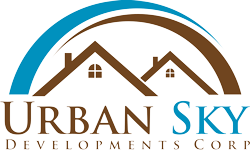Introduction:
As winter tightens its grip on Edmonton, the importance of selecting the right materials for Urban Sky Developments becomes paramount. In this blog, we’ll explore the key considerations in choosing materials that not only keep residents warm but also contribute to cost-effective solutions during the chilly months.
In Edmonton’s frigid winters, a well-insulated building is essential. Opt for materials with high R-values to minimize heat loss and reduce the need for excessive heating. Consider innovative insulation solutions that strike a balance between effectiveness and environmental sustainability.
- fibreglass Insulation: This is a common and cost-effective choice with a relatively high R-value. It comes in batts or rolls and can be used in walls, floors, and attics.
- Spray Foam Insulation: This provides excellent insulation and air sealing. It expands to fill gaps and can be particularly effective in hard-to-reach areas. However, some formulations may have environmental considerations, so it’s essential to choose responsibly.
- Cellulose Insulation: Made from recycled paper products, cellulose insulation is environmentally friendly and has a good R-value. It’s often used in attics and walls.
- Rigid Foam Insulation: This type of insulation board offers a high R-value per inch of thickness. It’s commonly used in exterior wall sheathing and can provide continuous insulation.
- Natural Fiber Insulation: Materials like wool and cotton are renewable and have good insulating properties. They may have a lower R-value than some synthetic materials, but their environmental benefits can outweigh this.
- Reflective Insulation: This type of insulation reflects radiant heat rather than absorbing it. It’s often used in attics, helping to keep spaces cooler in the summer and warmer in the winter.
Remember, the key is to balance insulation effectiveness with environmental sustainability.
